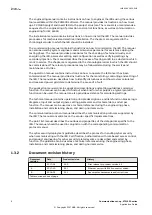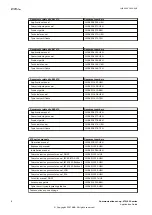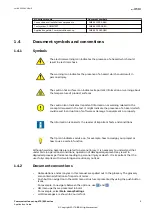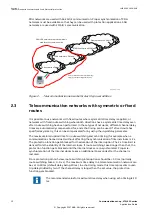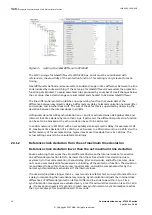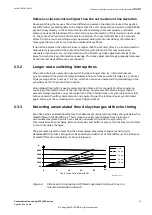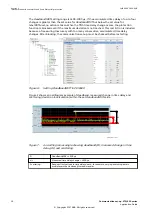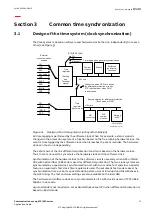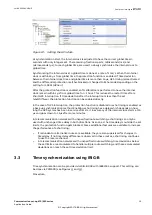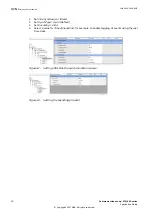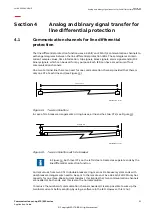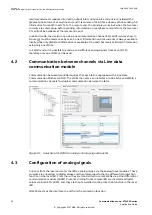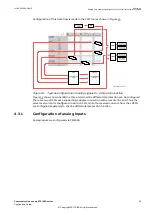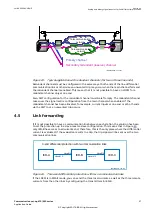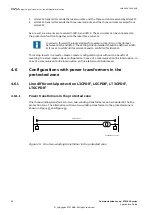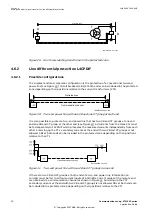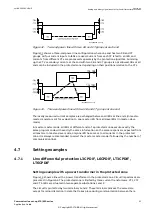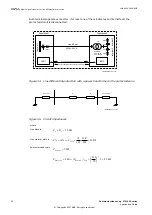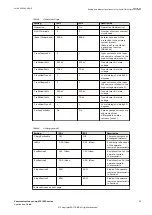
IEC10000203 V1 EN-US
Figure 10: Setting the GPS clock
At synchronization start, the internal clock is adjusted to have the correct global time in
seconds with only integers set. The remaining fractional parts, milliseconds (ms) and
microseconds (μs), to reach global time, are used to slowly synchronize the internal clock to
global time.
Synchronizing the internal clock to global time is done at a rate of 1 ms/s. When the internal
clock is within 16 μs from global time, the protection function is enabled. If time deviation
between the internal clock time and global time is more than 16 μs, GPS timing is deactivated
and the differential protection is either blocked or changed to Echo mode depending on the
setting for LDCM (
GPSerr).
After the protection function is enabled, soft calibration is performed to have the internal
clock remain within 1 μs from global time for < 1 hour. This reduces the restart time after a
short GPS interruption. If time deviation after the interruption is less than the set
MaxtDiffLevel, the protection function can be enabled directly.
In the case of GPS interruption, the protection function is disabled or echo timing is enabled as
a back-up synchronization method. Enabling echo timing has a delay which depends on how
long the GPS system has been in service after start. Inaccuracy of the internal clock starts at 16
μs and goes down to ±1μs after some minutes.
In telecommunication networks with unspecified route switching, echo timing can only be
used with unchanged time delay in both directions. As soon as the time delay is outside the set
limits, the protection function gets blocked. Some additional features are available to increase
the performance of echo timing:
•
If redundant or alternative routes are available, they are also supervised for changes in
time delay. If no time delay difference is observed in these routes, echo timing continues
to use the reserve channel.
•
In telecommunication networks with unspecified route switching, time deviations below
the set limits are accumulated to handle multiple route switching, and these accumulated
deviations can reach the set time deviation limit.
3.3
Time synchronization using IRIG-B
GUID-16212191-F952-4155-80C3-3B2245998311 v1
Time synchronization can be provided via IRIG-B 00X with IEEE1344 support. This setting can
be done via PCM600 (see Figures
Procedure:
1MRK 505 382-UEN E
Section 3
Common time synchronization
Communication set-up, 670/650 series
19
Application Guide
© Copyright 2017 ABB. All rights reserved
Summary of Contents for Relion 670 series
Page 1: ...Relion 670 650 SERIES Communication set up 670 650 series Version 2 2 Application Guide...
Page 2: ......
Page 10: ...4...
Page 99: ...93...


